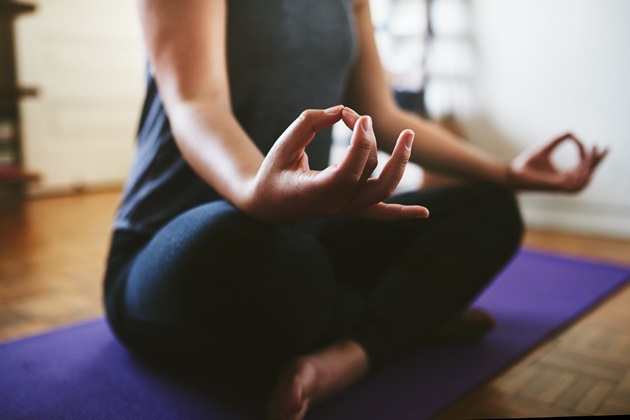Cardiac nurse Jessica Anne Filoteo explains how a meditation practice has supported her wellbeing during the pandemic and offers some tips to those wanting to try it out
One positive thing to come out of this pandemic is the light it has shone on how important it is to take care of our wellbeing – especially for health care workers. In workplaces, staff have been encouraged to engage in activities that promote wellbeing such as yoga, counselling, art therapy, journaling, etc.
For me personally, meditating has always been very helpful. I started my meditation practice a few years ago, and during the first wave of the pandemic I really learned to appreciate what it was doing for me and found it an incredibly supportive tool when it felt like events of this past year were becoming too much to handle.
Mindfulness meditation teaches you to slow down your thoughts, let go of negativity, and calm your mind and body
Mindfulness meditation is a practice that teaches you to slow down your thoughts, let go of negativity, and calm your mind and body. Techniques may vary but it generally involves a breathing practice and awareness of both body and mind. Some benefits from practising mindfulness meditation include: decreased stress and anxiety, increased focus and concentration, better sleep, equanimity, and enhanced self-compassion, to name a few.
I wanted to share these benefits with my colleagues and perhaps encourage them to start a meditation practice themselves, so in November last year I started a weekly mindfulness meditation session in my department.
Colleagues have told me that starting their shifts like this really made a difference in how they went about their day. I get reports of stress levels being reduced, as well as feelings of being more grounded and focused at work. And a number of them have told me they now practise it at home as well.
Jessica's top tips
If you are completely new to meditation, here are some tips that I often share with friends and colleagues who want to start their own practice.
- Use an app. There are many apps you can use that offer different kinds of meditation. You might want to start with a guided breath or body scan meditation. If you’re comfortable without a guide, most apps have a timer option with or without background music as well. Insight Timer, Calm and I-Qi Clock are some apps that I’ve tried and recommend. Headspace is also good, and is free for NHS staff. There are also many yoga studios and independent meditation teachers that offer live online meditation sessions if you prefer a session with someone you can actually talk to.
- Start small. The thought of sitting still for a long period of time could be very daunting for many. If you bite off more than you can chew, you might get discouraged and give up the practice completely. I used to go to the London Buddhist Centre when I first started my practice and they encouraged beginners to do two to three shorter sessions rather than one long one. As I continued to practise, I slowly managed to extend the length I was meditating for with relative ease. Start with 10 minutes every day and build it up overtime.
- Be consistent. Studies show that it takes 66 days to establish a habit. Pick a regular time for your practice, one that makes it easier for you to follow through. You might prefer to meditate first thing in the morning, or before you go to bed. Either way is good as long as it works for you. I am not much of a morning person so I found that when I tried meditating first thing in the morning, it usually helped if I started with a short yoga session or light morning stretches just to wake me up. If you prefer to meditate at night like I do, avoid doing it lying down in bed because chances are you'll fall asleep before you finish.
- Pick a comfortable spot to get settled in. You might want to sit upright on a chair or sit cross-legged on the floor with cushions. There really is no right or wrong way to position yourself for meditation and every person’s body is different. Try different ways of sitting down before settling in to start your practice. Having a soft blanket around your shoulders or legs, as well as a small pillow to rest your hands on, might also help keep you comfortable staying in one position for a period of time.
- Be kind to yourself. It’s okay to get distracted, that’s completely normal. When you do, just shift your attention back to your breath. One important lesson I learned from one of my meditation teachers was to try and let go of any expectations as these just add undue pressure of what this practice is supposed to be like. And when our practice doesn’t meet our expectations, we end up feeling frustrated and disappointed. Keep in mind that there will be some days when meditating is easy, and some days when it’s not. Either way, avoid labelling your meditation session as “good” or “bad” because there is no such thing. Keep it simple and just keep showing up. It’s all just practice.
Keep it simple and just keep showing up








